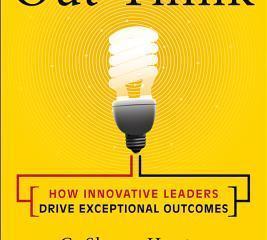
You read the title, rolled your eyes, and groaned. “Not another article on safety.” Or, maybe, you said, “Ah-ha, I knew all along safety wasn’t a priority.”
“Safety is our number one priority! Safety First!”
The claims make me cringe. The slogans put safety in competition with production. Are you somebody who declares, “Safety First!” until production, slips, stumbles and falls behind schedule? Perhaps corners are cut, hazards don’t seem so risky. And perhaps injuries happen.
As long as supervisors to the C-suite perpetuate and regurgitate these claims, the safety program is portrayed as completely out of touch with what happens in production … or, from the workers perspective, reality. And if you are one of the folks proclaiming “Safety is number one,” ask yourself this: Did you go into business to keep employees safe or did you go into business to make a profit?
Are you saying out loud, “Whoa, there cowgirl! Wait just one minute! Safety is important! Very important!”
I absolutely agree. I have been a safety professional for over 20 years, and will continue championing workers’ rights to a safe and healthy workplace, but safety still cannot be a priority.
Confused? Stay with me.
Let’s go back to the safety-or-profit question. Did you answer, “Of course, I’m in business to be profitable, but not at the expense of injuring workers.”? Great! We all know hurting workers is not acceptable and hinders our profitability. Hurt worker costs not only siphon cash off the bottom line, but include hard to measure elements such as loss of a valued worker, lowered employee morale, delays, loss of customer confidence, unwanted media attention, and the list goes on.
But if you continue beating the “Safety is our number one priority” drum, your employees will have trouble believing in your safety program, rendering it ineffective.
Let’s chat briefly about priorities.
This ever happened to you? Late one afternoon your boss calls needing a bunch of information, by morning. It’s a priority! You work very late, get the information out to your boss. The next day, you haven’t heard from your boss. You call to see what is up, and you’re told that project is no longer a priority. Feeling a little bummed?
This is why safety cannot be a priority. Priorities are a moving target, easy to see and sometimes maddeningly difficult to hit.
So if safety is not a priority, what is it? Safety must go much deeper than just being a priority.
Safety is a value, ingrained in your workplace culture, unwavering, unchanging, and non-negotiable. Safety must be a guiding principle that permeates everything you do. Values make up the framework to evaluate the past and plan the future; values determine our behavior.
I’ll bet you’re thinking … “Ahh, that is sort of heavy.” Values can be like that. Consider this, would you rather be a priority to someone else or valued?
Are you saying, “I value safety. I follow the Occupational Safety and Health Administration regulations. I comply.” Great! But are you complying because it’s the law or because it’s a springboard for continuous improvement? Before OSHA, there were 37 job-related fatalities every day. Today, that number has been reduced to about 14 per day. Compliance can only take you so far if you’re looking to achieve the goal of zero injured employees.
How do we integrate safety and production? Create a culture of safety. It originates with strong support from the top. (Hint: That’s you.) A total commitment to start each task safely, from the person who ships your products, to participants in the shareholders’ meeting. You create a safety vision for your business supported by your safety mission and goals. All employees, from line workers to CEOs, are accountable for their role in the safety culture. This culture has safety clearly written into every procedure to reduce exposures. Employees have the power and the responsibility to suspend work if it becomes unsafe. And there is so much more, fair decision making, open upward communication, co-workers approaching one another about safety issues, and employee involvement in the entire safety process.
As a leader for your business, continuing with safety as a mere priority, you aren’t protecting your employees. Without healthy employees, your business goals are difficult to reach. As a leader, you play a critical role in creating and sustaining a safety culture.
A culture of safety will reward your employees, enable your production and benefit your business.
Connie A. Hall is the safety manager for the Tronox Henderson plant. She has more than 20 years of experience in the industry, including working as an OSHA inspector.






